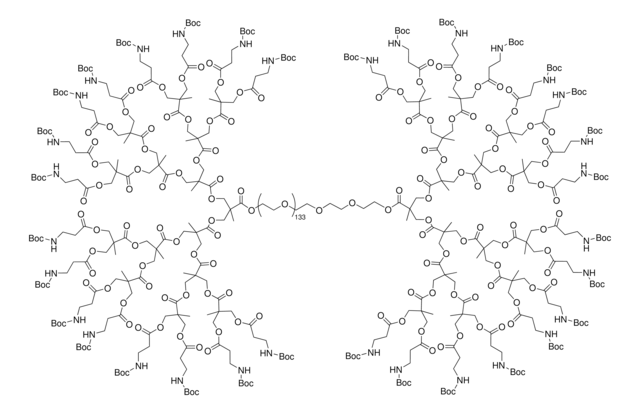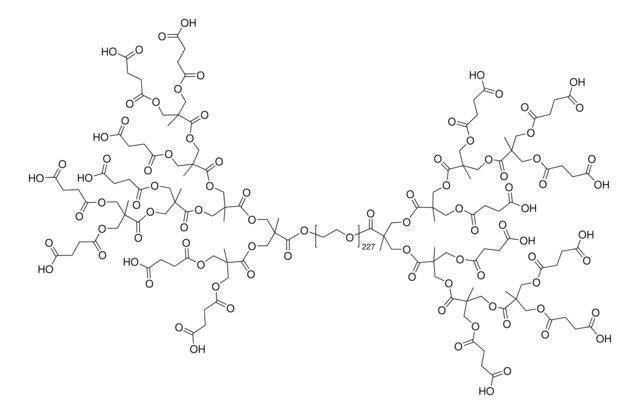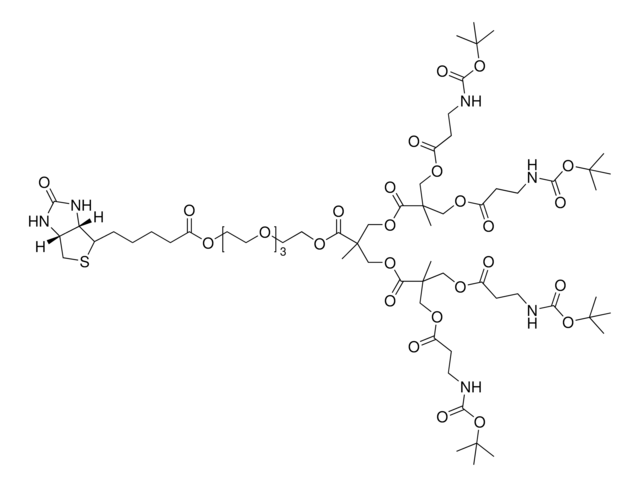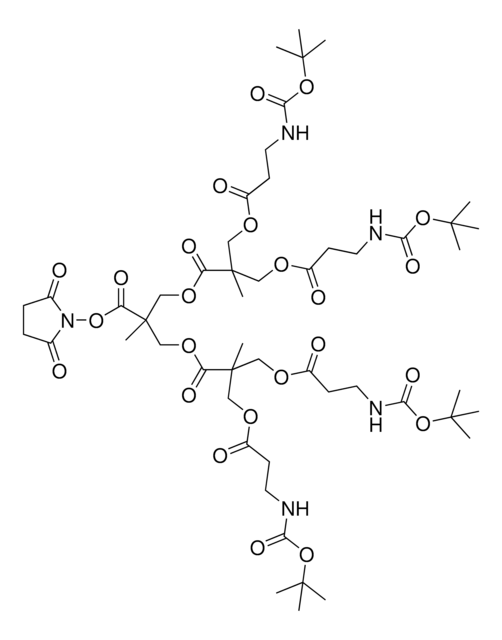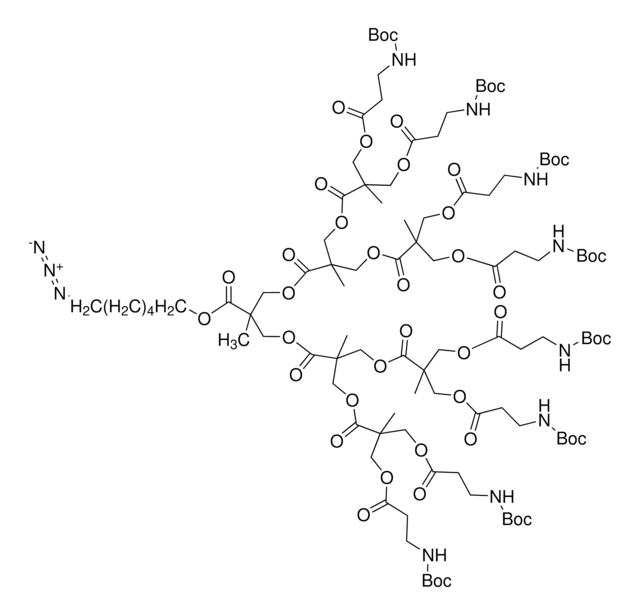911321
Poly(ethylene glycol) linear dendron
carboxyl terminated, PEG Mn 10,000, generation 2
About This Item
Recommended Products
form
solid
mol wt
PEG Mn 10,000
generation 2
no. Surface Groups
4
color
white to off-white
storage temp.
−20°C
General description
- Polymer architecture: PEG-linear dendron
- Generation: 2
- PEG average Mn: 10,000
- End Group Functionality: Carboxylic acid
- No. Surface Groups: 4
- Calculated Mol. Wt.: 10780.71 g/mol
- Bis-MPA = 2,2-Bis(hydroxymethyl)propionic acid
Application
Storage Class Code
11 - Combustible Solids
WGK
WGK 3
Flash Point(F)
Not applicable
Flash Point(C)
Not applicable
Choose from one of the most recent versions:
Certificates of Analysis (COA)
Don't see the Right Version?
If you require a particular version, you can look up a specific certificate by the Lot or Batch number.
Already Own This Product?
Find documentation for the products that you have recently purchased in the Document Library.
Articles
Professor Michael Malkoch provides an overview of the unique properties of dendritic molecules and their application in biomedical fields. He highlights bis-MPA dendritic scaffolds as a promising biodegradable and biocompatible platform for drug delivery applications
Our team of scientists has experience in all areas of research including Life Science, Material Science, Chemical Synthesis, Chromatography, Analytical and many others.
Contact Technical Service